Text
🩷🌿 A Wild Snurby Appears! 🌿🩷






This pastel pink patootie was commissioned by @twigthecoyote as a gift for their friend. I had so much fun working on them! I'll never get tired of making snurbies 🩷🐌
464 notes
·
View notes
Text
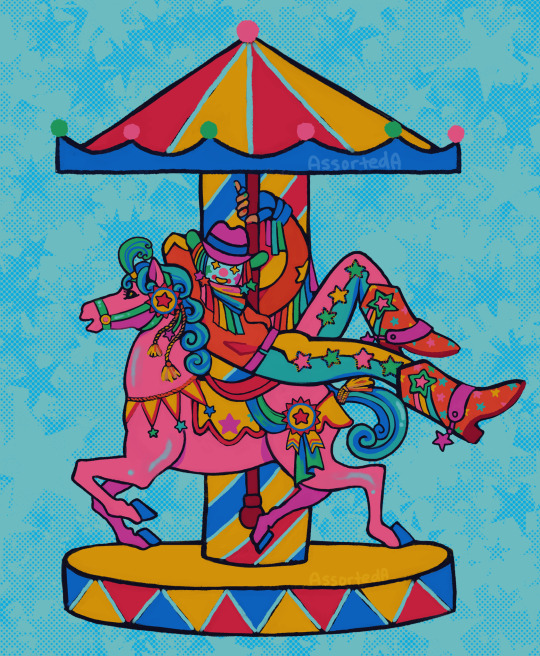
Clown Art Month 2023 | Day 3 : Merry-go-round
Yee haw, a merry-go-round cowboy clown ! 🎠🤠
1K notes
·
View notes
Text

a domesticated doomguy, in his natural environment, properly nurtured, properly trained, and thriving. the terrible mistreatment of most domestic doomguys is the only reason they’re so violent, as strong as they are they still avoid conflict in the wild but we need to care for them carefully in captivity or they’ll resort to lashing out on your demons…
394 notes
·
View notes
Text
On clowns in public spaces
Ok so like I thought this was common sense but I guess common sense isn't as common as it should be. Please do your research before bringing your clown into any public spaces. There are some places that just aren't clown friendly of course but that's not what I want to talk about here. I'm talking about the people who take their clowns to places that clown is clearly uncomfortable with. Yes I am aware that clowns aren't like dogs and unlike dogs do actually get something out of going to restaurants and the like but the type of places they enjoy going to are completely breed dependent.
Quick break down. High energy breeds like Big Tops and Classic Party would enjoy it in equally high energy places like clown friendly pool parties and busy streets, they wouldn't enjoy it in a low energy place like a quiet cafe (they might even get upset and disturb anyone trying to enjoy the space.)
Medium energy breeds like the North American Tramp and the Spooky Clown enjoy places where they can choose the level of interaction, think your local clown park.
And low energy breeds like the Pierrot enjoy, you guessed it, low energy places where they don't really have to interact with anyone but themselves and you.
So many people get a breed without doing the proper research and get upset with the clown for not enjoying themselves in the places the owner enjoys going.
The best outcome is the owner bring the clown to one of our many shelters and the worst case is the poor thing getting left on the side of the road somewhere.
Just please do right by your clowns and get a breed that fits your lifestyle and that will be comfortable in the places you go. Both you and your clown will be grateful.
-Admin Dana
174 notes
·
View notes
Text
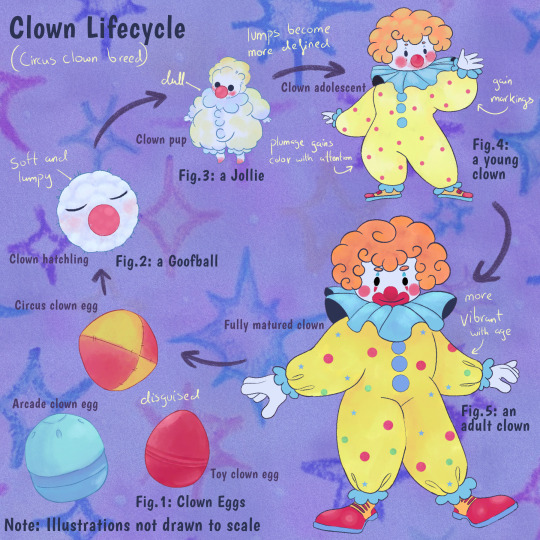
"Featured here is the lifecycle of a clown, specifically illustrated through a Circus Clown. Although individual characteristics may vary, such as the shape and color of the camouflaged egg, the size and texture of the Goofball, and the emerging colors of the Jollie, all clowns undergo similar developmental stages. These stages encompass a diverse range of traits exhibited by young and adult clowns, influenced by their respective breeds or subspecies."
1K notes
·
View notes
Text
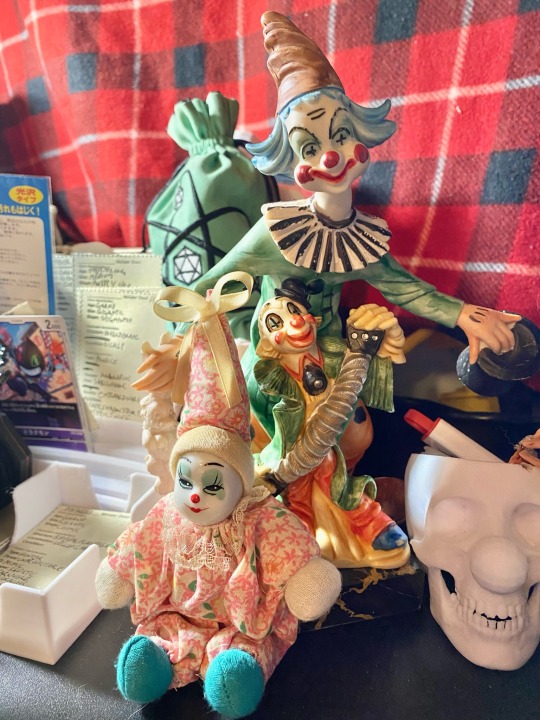
A Quick Guide to Clown Breeds
Today I'd like to discuss the amazing genetic diversity found in our delightful clowns. Most of my information comes from the fantastic @clownology4dummies blog and this article is a direct result of the mini-interview I had with them. There's quite a lot to take in so we'll break it down into a few sections. The goal is that you will be able to answer your own question as to which breed your little funny friend is!
What are the Different Clown Breeds?
There are actually quite a lot of clown breeds! The most common terms you'll find amongst the clown husbandry tag include Teacup, Jester, Circus, Rodeo, Party, Mime, Harlequin, Pierrot, Porcelain, Tramp, Tragic, Auguste, Whiteface, and Fool. A lot of these terms are subcategories of others, so let's take a look at the umbrella terms and their related variations.
Circus
Circus is likely the largest umbrella beyond even what I've denoted here. In most cases, every breed can qualify as a circus clown with only a few exceptions. Circus clowns are rowdy, energetic, and require significant stimulation making them a tough breed for average households and new keepers.
However their beauty rivals that of traditional clown performers making them sought after by collectors. Additionally, circus breeds also have three main variations with unique behaviors and appearances each.
Whiteface
Possibly the best known breed is the whiteface. Inspired by the leader of the troupe in the classic clown theater format, this breed is elegant and beautiful. Their skin tends to be chalk white all over and they beat delicate and intricate marking.
Auguste/contre-auguste
In traditional performances, the auguste is the absurd counterpart of the whiteface. Troupes may have more than one auguste whereas there is typically only one whiteface. The auguste often has a base skin tone that is highlighted with section of white. The white patches are usually outlined in a distinct color and the other marking they have are typically bold, bright, and exaggerated. They lack the subtle dignity of whitefaces and tend towards loud and boisterous appearances and behavior.
Tramp
Another popular circus variety is the tramp, also known as the hobo clown. In breeding circles it's typically referred to as the American Standard Coat. This breed is known for its long and luxurious coat. Besides this, they typically have markings somewhere between the tragic and the auguste, but with a more rugged flair.
Jester
The jester is easily one of the most sought after breeds of clowns. They hail from a very privileged lineage prized by royalty of old. As such they are known for their exquisite costumes of high quality materials and bold colors and patterns. Additionally, true purebred jesters have little to no facial markings.
Fool
The fool is the commoner variety of the jester breed and tends to have less exquisite breeding. They are typically mixed with any other variety of clown. Despite having slightly more drab costumes and coloring, they make up for this with big personalities and accessibility to the average collector.
Harlequin
The harlequin fits squarely between the fool and jester being both and neither at the same time. Primarily they are denoted as a jester with an emphasis on patterns. Harlequin make up for a lack of facial marking with an explosion of costume detail.
Pierrot
The pierrot is somewhere between the royal perfection of the jester and the raw elegance of the whiteface. These clowns tend to have delicate markings and minimalist costumes. Typically their coloration consist of almost exclusively white with small black or red elements. These clowns thrive on culture and have a major flair for dramatic theatrics.
Tragic
As a subcategory of Pierrot, the tragic clown unsurprisingly focuses on theater. However their interest is as one would expect, primarily about tragedies. They love all things sad, dramatic, and dreary. They can usually be spotted with recent tear stains. Don't be surprised if your clown spends a lot of time sighing or staring out the window. That's just how they are and they like it that way.
Porcelain
Since many breeds feature porcelain elements, this grouping could potentially be an umbrella term for most other categories. However for the sake of simplicity, this blog will use this term to refer to clowns with porcelain like details but who don't quite qualify as a whiteface on their own. They may be partially or entirely porcelain and as such should be treated with care and dignity so as to avou trips to the vet.
Teacup
The teacup clown is arguably the most popular among the clown husbandry tag. Due to their petite size and soft features, they are a great choice for the average size house dwelling keeper. Teacups typically range from three to five inches from toe to hat tip. They have soft sand filled bodies that are especially good at sitting and looking cute. Usually the face is porcelain.
Due to their popularity, teacups share a liniage with just about every other breed. It's not uncommon to find teacups with jester, whiteface, and even scareclown features.
Party
Another favorite among clown enthusiasts is the party breed. Much like real life clown performers, this breed is dynamic, friendly, and outgoing. The appearance of the breed is extremely varied and they can have features like just about any other breed. The only difference is that the party clown is always bright, colorful, and typically they have extraordinary patterns. Party clowns typically don't have anything subtle about them and their facial markings are between that of the August and the whiteface.
Rodeo
The rodeo is actually closely related to the American Standard Coat but it was bred for working purposes. Much like the real rodeo workers, this clown breed has a desire to work with livestock and has excellent herding instincts. As such they need a lot of space and significant exercise opportunities. They differ from tramps in that they rarely have coats; instead they features costumes akin to colorful exaggerations of cowboys.
Scare
The scare clown is my personal favorite breed and I'm very excited to have the chance to discuss them. This breed is determined more by diet and behavior than appearance. They live to thrill others and spend a lot of time lurking and waiting for the perfect jump scare opportunity. They are quite aggressive and most believe they are essentially completey wild and should not be interacted with like other domestic breeds.
In terms of appearance, scares can look like virtually any other clown; from elegant to eccentric. However, darker coloration and features that tend toward the uncanny are generally associated with scares. Additionally it's worth noting that some breeder intentionally breed clowns to look like horror movie clowns. While some argue this may not be the most sustainable or humane practice, lookalike scares still remain popular with many collectors (myself included!).
Mime
It's important to note that while mimes of the human cultural sense are a variety of clowns, they are different in the collector sense. While they share looks with whiteface and color palettes of Pierrot, it's not visible features that make them different. Mimes are by nature completey silent. They also confound themselves and others with magic tricks.
Interbreeding mimes with other clown varieties may result in extremely elegant offspring. However it's considered to be a highly immoral practice. Doing so causes a lot of stress to the parents and the offspring as mime mothers will consistently reject young the instant they make noise-- and most other breeds are very noisy from the get go. This means breeders must be able to care for extremely young and vulnerable clowns which is challenging to say the least.
Which Breed is My Clown?
For most of us, this is the most important question. However, it's actually a very difficult question to ask. Just talk to anyone that works at a local adoption center or take a look at your local strays. Clowns have been carelessly bred for decades by shady individuals. As such, few clowns you'll find today are definitely a purebred of any variety. Most display a chaotic mix of behavior and visual genetic variation.
As such it's not unfair to judge your teacup as also whiteface and jester. Or your jester as scare and tragic. Look closely at the details in your clowns makeup, costume, and behavior to make an educated guess. Ultimately only a genealogy test will give you definitive answers, but those can be pricey depending on your location. As such it's generally considered more worthwhile to puzzle the likely origins of clowns and simply enjoy them as the quirky mix breed they are.
Final Thoughts on Clown Breeds
In closing it's easy to see why new clown keeper's tend to become.confused as to which category their clowns fit into. I hope this guide has helped you clear up any confusion you have. Please feel free to comment below with any questions or to ask our friends at Clownology for even more expertise.
Additionally if you feel I've made any mistakes here, please don't hesitate to comment or reblog with corrections. As I primarily raise circus and scare clowns, I'm by no means an expert on every breed. I will be delighted to make adjustments so this blog can serve as a useful resource to newcomers and expert clown parents!
Thank you for taking the time to read and I hope you'll join me again soon for more clown news and articles. In the future I'll be discussing each breed in more detail as well as exploring specific pure bred lineages.
849 notes
·
View notes
Photo
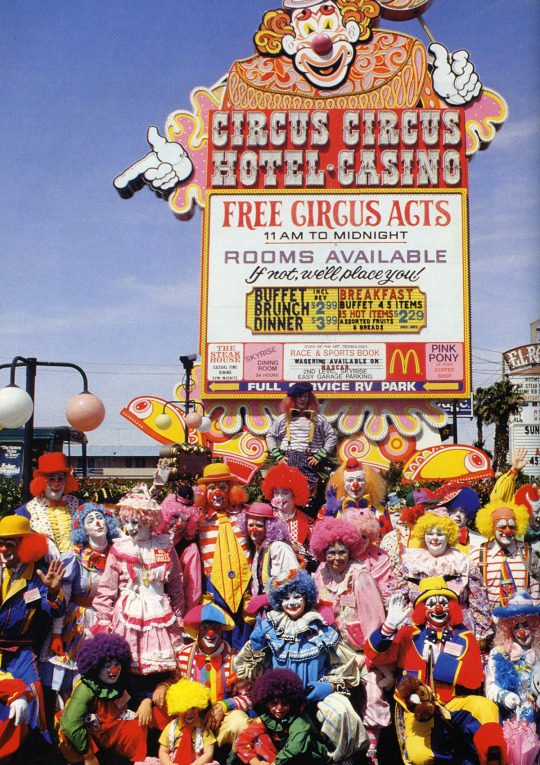
Circus Circus, April 1992
World Clown Association’s 10th annual International Clown Convention was being held across the blvd at the Riviera, Apr. 22-25, 1992. Photo by Jim Gurzinski
3K notes
·
View notes
Text
Ok I feel like it so some cute clown behaviors!
They’re generally pretty sensitive to emotions so if your sad they might preform little tricks for you!
Sometimes clowns paint the faces of their owners to “add them to their troupe”, don’t get angry because this shows that they love and trust you, and maybe consider wearing a minimized version sometimes to show you want to be part of their group!
Small scare clowns will jump out of random places and “scare” you, basically yelling boo or squeaking loudly if they’re not prone to talking. Acting scared and complementing their scaring skills makes them extremely happy!
Some clowns love stuffed animals/other props, and will carry them around like a comfort item. If they entrust you to care for their item while they do things that require being away from it PROTECT IT. This shows a lot of trust, so cherish it!
Honking! It’s typically a joyful thing and various trills, honks, squeaks, and chirps show a happy clown. Never punish them just for making noise, clowns are intelligent and can understand when it’s a inappropriate time if it’s explained to them.
142 notes
·
View notes
Text







Click Image For Better Quality
Clownology of Clown Breeds Part 2
Part 1
These are the clown breeds explored in my surreal clown husbandry inspired worldbuilding project Clownology. Excuse the shitty artwork, I ended up rushing through these because I was in a tense place and wanted to get to drawing my OCs and other stuff lol.
147 notes
·
View notes
Text






Click Image For Better Quality
Clownology of Clown Breeds Part 1
Part 2
These are the clown breeds explored in my surreal clown husbandry inspired worldbuilding project Clownology. Excuse the shitty artwork, I ended up rushing through these because I wanted to get to drawing my OCs and other stuff lol.
168 notes
·
View notes
Text
Improper clown housing
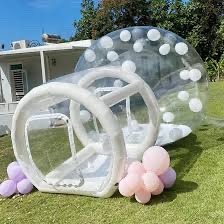
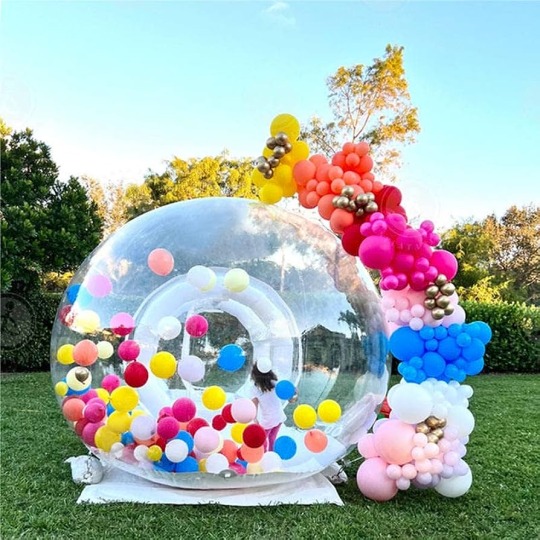
Enclosures like these do not provide the same comfort and safety that bouncy castles, and bouncy houses, and ball pits provide. Getting a bubble like this for your clown because “you like the aesthetic” is cruel. The see through bubble will make your clown feel improperly hidden or and safe which can lead to severe stress and panic attacks. This bubble will provide little to no enrichment for you clown. It can also be a hazard, some clown breeds have poor eyesight similar to how birds can’t see glass and have poor depth perception. This is why having brightly colored and padded walls such as in a bouncy house are crucial for the safety of your clowns. Clowns deserve a place to feel comfortable and safe. These bubble houses should not be used as a replacement for a bouncy house or ball pit. Sadly I have seen them be marketed as a two in one replacement for both. New clown owners need to be aware of this and steer clear of these.
2K notes
·
View notes
Text
a note of proper knight husbandry:
one can swiftly figure out the appropriate collar and leash for a pet knight by the weaponry choice.
typically a polearm knight shall need a snugly fitted collar and a short leash to avoid chivalrous duels with other knights. the honorable sword and shield knight is middle of the road, needing a medium collar and medium leash alike, while the dashing rapier-wielding fencer knight may need a padded collar and retractable leash to avoid one's knight from lunging forward and strangling themself, of course
the longsword breed like i, we require similar husbandry to the sword and shield, but perhaps a longer lead lest we smack our lords with our blade. the rest should be simple enough to decipher from this list
25 notes
·
View notes
Text
hey does anyone know anything about pet knights? i was looking at getting one but i dont know much about them
what breed would get along with a plush clown?
23 notes
·
View notes
Text
Public service announcement!
If you see a service/emotional support clown in public, DO NOT INTERACT!! I’m tired of hearing story after story from my friends about how someone was distracting their service clown. If they have a vest on they’re working, end of story! Don’t try to get them to honk, show you a magic trick, and especially don’t try to feed them. Just pretend like they’re not there. Thank you
1K notes
·
View notes
Text
On clown breeding
PLEASE home breeders!
When you’re breeding your clowns remember that TROUPE STATUS is as important as sex when breeding! Clowns do not have a true ‘gender’ the way we consider it, but male and female sexed clowns have one of three mating positions in the troupe.
These positions are
BLANC/JOEY (Joey is the American term) (non-egg bearing)
AUGUSTE (egg bearing)
and
CONTRA-AUGUSTE (promotes hormone facilitation)
Do NOT listen to breeders who tell you that you can breed two auguste clowns or two joeys with a good result. Double august/double joey clown eggs are almost never viable! For best results you want an August and a Joey, preferably with a pair-accepted contra-august!
2K notes
·
View notes
Text

『 иσω ρℓαуιиg . . . . 』
╰┈➤ ✷ cнιcкєи мαи - єνєℓуи єνєℓуи ✷
49 notes
·
View notes
